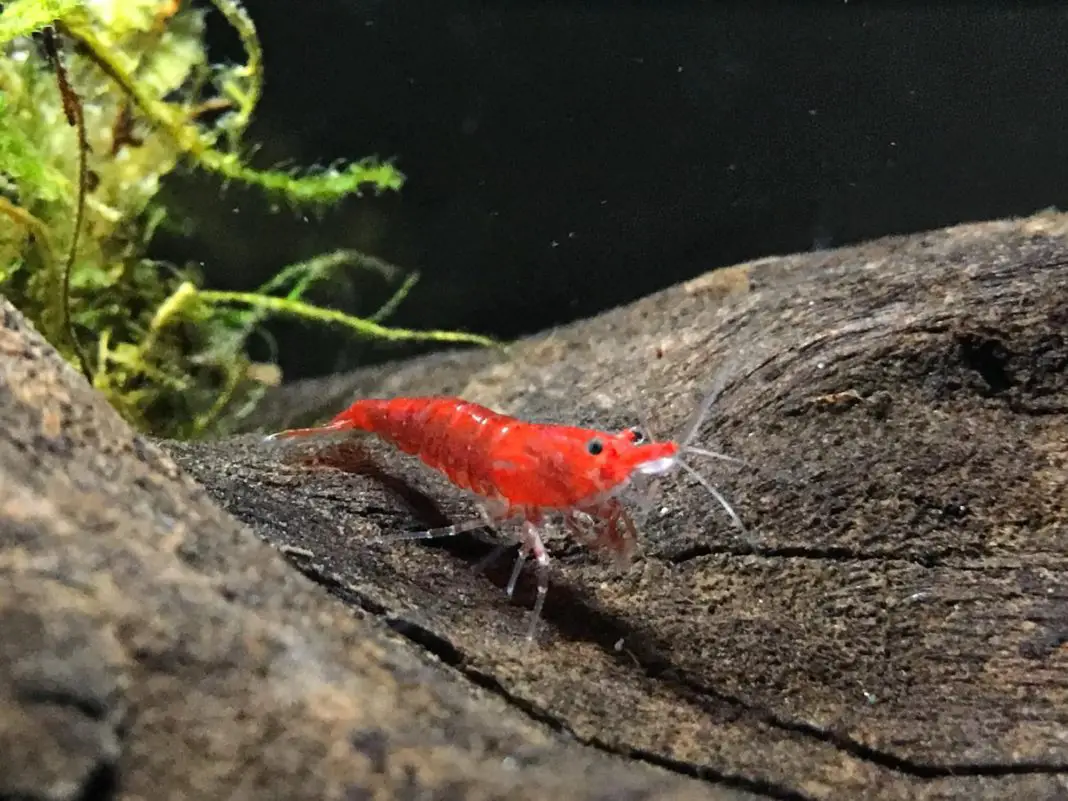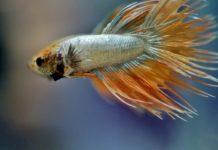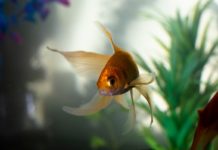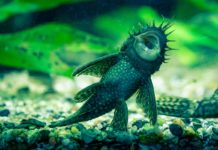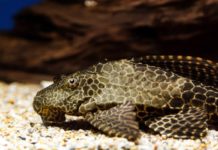Shrimp are a popular choice for aquarists. Not only are they colorful and attractive to look at, but they are also relatively inexpensive to buy and straightforward to care for, making them an excellent choice for beginners.
In this guide, we’ll compare the Opae Ula and the Cherry shrimp.
Opae Ula Vs Cherry Shrimp – What’s The Difference?
The Opae Ula has the scientific name Halocaridina rubra. This shrimp can be seen in many colors like yellow, clear, orange and pink, while they’re most recognizable as a vibrant red. The cherry shrimp has the scientific name Neocaridina davidi and its colors can come in a deep red to a pale color.
Comparison Table
| Features | Opae Ula | Cherry Shrimp |
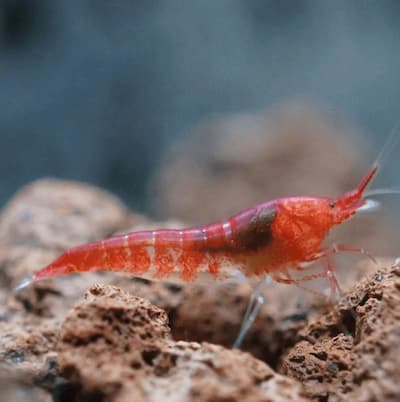 |  | |
| Appearance: | Yellow, clear, orange and pink, most common is a vibrant red | Pale to deep color |
| Size: | 1.5 cm (0.5 inches) | 2.5 – 3 cm (1 – 1.2 inches) |
| Water Conditions: | Optimal PH 8.0 – 8.5 | Optimal PH 7.0 – 7.5 (6.0 – 8.0) |
| Temperatures: | 20 – 27°C (68°F – 80°F) | 22 – 28°C (72°F – 82°F) |
| Lifespan: | up to 20 years | 1-2 years |
- The Opae ula is also referred to as the Tiny red shrimp or Super shrimp.
- The Cherry shrimp is also referred to as red cherry shrimp.
- The Opae and Cherry shrimp are two different species. They both belong to the same family, Atyidae.
- Both shrimp are known for being peaceful.
Comparing The Opae Ula And Cherry Shrimp
In this part of our comparison guide, we’ll take a closer look at both species of shrimp, their similarities, and their differences.
The Opae Ula Shrimp
First of all, let’s discuss the Opae ula species.
Origins And Distribution
Opae Ula Shrimp is indigenous to the islands of Hawaii and is found in tidal and anchialine pools. Anchialine waters are those that’s found inland, but linked below the surface with the ocean and thus are brackish and susceptible to tidal flux.
Appearance
Opae Ula Shrimp are quite small and grow no larger than half an inch (roughly 1.5 centimeters) in length. Though they’ve been seen in many colors – clear, yellow, orange, nearly translucent, pale cream and pink, for example – the most common form of Opae Ula Shrimp is a vibrant red.
So vibrant is their color that the species can transform the appearance of water and benthic surfaces of an anchialine habitat when large numbers of individuals aggregate together.
When Opae Ula shrimp are disturbed, they are known for turning pale or lose their red color over a part or most of their body. They will revert back after variable periods of minutes or hours to the original intensity of redness.
Social Behavior
Opae Ula shrimp are not predatory nor are the chelae used in defence. In the wild, this species appears to be successful when there are no predators.
Diet
The Opae ula will primarily eat algae and biofilm that form in a tank but can be fed blanched vegetables, fish food, and shrimp flakes. Spirulina can also be an excellent supplement for an Opae Ula Shrimps diet. If their tank is placed in indirect sunlight, the shrimp will need to be fed only every few weeks or even months, due to algae and biofilm naturally forming on surfaces within.
Another supplement for their algae diet, they can be fed enhancing shrimp pellets once every week or month.
Tank Mates
Opae Ula shrimp are very small and can become prey for most fish when kept in the same tank. The brackish water also limits the options. In addition to this, the presence of potential predators can directly affect their behavior by making them less active.
Breeding
Opae Ula shrimp don’t breed very often. So don’t expect this shrimp to breed like the Neocaridina or Caridina shrimp. Opae Ula shrimp are low form breeders with a slow metabolism. It takes Opae Ula a lot of time to become ready to breed. That’s why females can produce only a few times per year.
The water conditions need to be very stable and appropriate for them to breed. While Opae Ula shrimp can survive in a wide range of settings, they’ll only breed if the water in their tank meets their needs properly.
The Cherry Shrimp
Now, let’s take a quick look at the Cherry shrimp.
Origins And Distribution
To make the best of cherry shrimps, you need a little bit of information regarding where they come from. These creatures can be traced back to Taiwan, where they’re used to living in ponds and streams that’s packed with plants and rocky materials.
Habitat
The tank needs to be close to what its natural habitat is like. So, they require lots of plants; crevices for their hiding and moss. Driftwood can be a useful addition as it encourages algae nibbling.
Appearance
Red cherry shrimps are quite easy to spot and well known for their appearance. Red cherry females are generally longer than the males and can grow as long as 1.5 inches. However, the most unique feature about the appearance of red cherry shrimp is that they’re graded. The color grading can be anything from a very deep red to paler colors with red spots.
Social Behavior
Inexperienced cherry shrimp owners have struggled with raising their cherry shrimps successfully simply as they seem to put them together with the wrong tank mates. Cherry shrimps are incapable of hurting other tank mates and have no mechanism for defending themselves against potential predators. Hence, if your cherry shrimps are going to last their entire lifespan, they need to be with the right tank mates.
The best way to ensure the safety of the cherry shrimp is by making sure they have enough plants and other hiding places in the aquarium. Fish like Discus, Cichlids, Arowanas, and Oscars shouldn’t be in the same tank.
Tank Mates
The survival comes down to the shrimps grading. High-grade cherry shrimp are most suitable inside single species aquariums, whereas low graded cherry shrimp can exist alongside other tank mates. Tank mates can include Pygmy Cory Catfish, Borneo Sucker, small plecos and freshwater snails like the Mystery snail, Ivory snail, Gold Inca snail, Japanese trapdoor snails, Malaysian Trumpet Snail, Nerite snails or Ramshorn Snails.
Fish that should be avoided include the Discus, Cichlids, Arowanas, and Oscars.
Breeding
If you’re keeping cherry shrimps together, there should be at least 10 of them, as that will help to reduce dominance that could emerge as a result of their staying together. The more that they’re in their group, the more confident they’ll be, leading to more natural behavior.
To increase the chances of breeding, consider having more females than males in the tank, as that’s an excellent way of encouraging breeding in the long run.
Stand Out Features
- Opae ula shrimp and Cherry shrimp look very similar, although there’re notable differences. Cherry shrimp are larger than Opae.
- It’s possible to breed both shrimp species in an aquarium, provided that the environment is set up correctly.
- The Opae and Cherry shrimp eat a similar diet both in captivity and in the wild.

